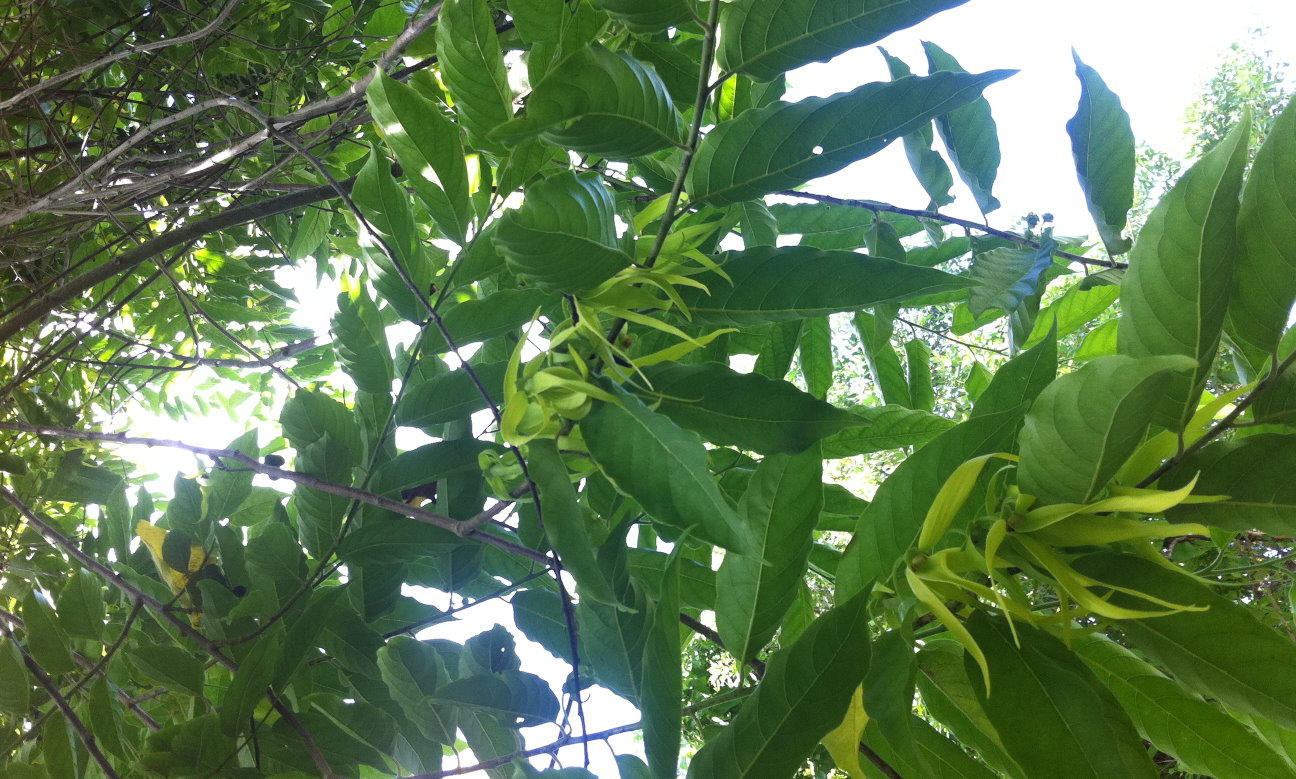Ylang-Ylang III
Cananga odorata is a fast-growing tree of the custard-apple family, Annonaceae, that exceeds 15 ft per year and attains an average height of 40 ft. It grows in full or partial sun, and prefers the acidic soils of its native rainforest habitat. The flower is drooping, long-stalked, with six narrow greenish yellow petals, rather like a sea star in appearance, and yields a highly fragrant essential oil.
My tree which was badly damaged years ago by a hurricane, has fully recovered and has grown to be 30 or 40 feet and in bloom right now. I think there are many myths about the scents of flowering tree/flowers. Usually, there is a lot of exaggeration. Take this Ylang-Ylang for instance... its fragrance is quite subtle and not overpowering as some say. When you pass under it, you'll stop because you have detected some unusual and very pleasant scent... but it may take you a while to find its source. And it is much more easily detectable in the morning.
The essential oil of Ylang-Ylang is used in aromatherapy. It is believed to relieve high blood pressure, normalize sebum secretion for skin problems, and is considered to be an aphrodisiac. The oil from Ylang-Ylang is widely used in perfumery for oriental or floral themed perfumes (like Chanel No. 5). In Indonesia, Ylang-Ylang flowers are spread on the bed of newlywed couples. In the Philippines, its flowers, together with the flowers of the sampaguita, are strung into a necklace (lei) and worn by women and used to adorn religious images. My advice to you is to either get married in Indonesia or go there for your honeymoon.
Ylang-Ylang is believed to give relief to many ailments: motion sickness, palpitations and reducing high blood pressure, slow down over-rapid breathing and heart tachycardia, treating PMS, extreme mood swings, hair split-ends. You think I can quit my day job and live off my tree here?



No comments:
Post a Comment